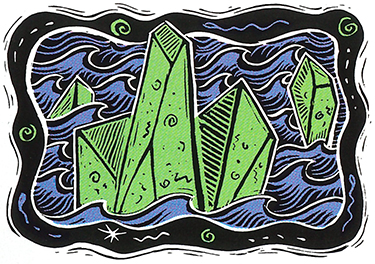Scientists find key to rare emerald icebergs
 And now there come both mist and snow,
And now there come both mist and snow,
And it grew wondrous cold:
And ice, mast-high came floating by
As green as emerald.
—Samuel Taylor Coleridge, “The Rime of the Ancient Mariner”
When we describe a situation with the old cliche, “It’s just the tip of the iceberg,” the image most of us have in mind is probably the blue-white giant that sank the Titanic, not the “green as emerald” object of Coleridge’s poetic imagination.
That’s hardly surprising since green icebergs are a one-in-a-thousand phenomenon. Until UW scientists accidentally encountered one during a 1988 research cruise in the Indian Ocean, the source of their unusual hue was a mystery. “We weren’t out there looking for green icebergs,” says Stephen Warren, associate professor of geophysics and atmospheric sciences. “But when we happened on this one, we had to take a look.”
That look—using samples brought back to Seattle in a suitcase so chilled that it created its own fog bank as it was carried through airports—yielded an answer: sea water frozen to the underside of the ice shelf had trapped yellowish brown plankton. When an iceberg snaps off the ice shelf, it sometimes flips over as it floats away and up comes the yellow color. Like mustard spilled on blue jeans, yellow against blue equals green.